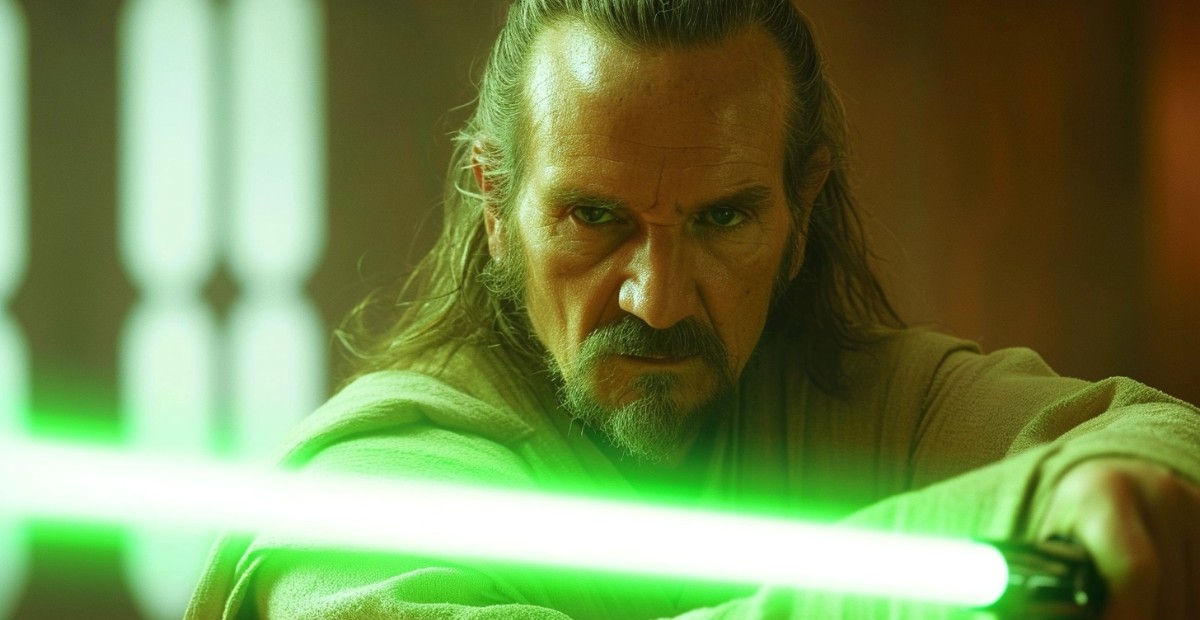As a die-hard Star Wars fan, I’ve spent more hours than I care to admit mulling over one of the galaxy’s greatest mysteries:
Why do those on the Dark Side seem to have a better survival rate than the Jedi?
From Darth Maul’s unlikely comeback to Palpatine’s chilling cackle in the “Rise of Skywalker” trailer, the Sith’s knack for sticking around has always intrigued me.
Let’s delve into this phenomenon, shall we?
1. The Nature and Will of the Dark Side
When we look at what happened between Qui-Gon Jinn and Darth Maul, it’s a perfect example of how differently the Jedi and Sith view life and death. Qui-Gon didn’t resist his fate—he accepted it. That’s what being a Jedi meant to him. He believed in the will of the Force, even if it led to his end.We can actually see this mindset in how Qui-Gon behaves during the lightsaber duel on Naboo. When the energy shields separate him from Maul and Obi-Wan, Qui-Gon doesn’t pace or panic—he drops to his knees and meditates. In the middle of a life-or-death battle, he chooses calm, peace, and connection with the Force. That moment says everything about how he sees his place in the galaxy.
On the other hand, Maul was consumed by rage. Even after being cut in half, he didn’t die. His hatred, his need for revenge, and his refusal to let go kept him alive. While Qui-Gon found peace in his final moments, Maul clung to life out of pure spite.
We saw just how far that hatred carried him in The Clone Wars. When Savage Opress finds him on Lotho Minor, Maul is barely recognizable—he’s half-mad, crawling through the shadows with mechanical spider legs, ranting about Obi-Wan. All those years later, his mind had twisted around a single thought: revenge. That’s what sustained him. That’s what brought him back. It’s the clearest example of how a Sith’s will can defy even death—but at a heavy cost.
2. Sith Refuse to Let Go of Their Physical Bodies
We actually get a really powerful breakdown of this contrast in the book Skywalker: A Family at War. There’s a moment after Obi-Wan’s death where the book says, “In his first moments of clarity amid the ether, Kenobi found freedom in leaving behind his aging body. He finally fully understood one of Yoda’s favorite truisms: ‘Luminous beings are we. Not this crude matter.’” That one quote just says it all. Obi-Wan let go. He accepted death, just like Qui-Gon did because that’s what being a Jedi is about—moving on and becoming one with the Force.
But here’s the thing—the Sith couldn’t be more opposite. The book continues, “The greedy Sith preserved their physical manifestations at all costs, never able to let go of corporeal forms and move beyond to the next plane of existence.” That explains so much about characters like Maul and Palpatine. When Maul got cut in half, he didn’t die because he refused to. He was trained in the Sith arts, filled with rage and vengeance, and he used that to stay alive. Same with Palpatine—blown to pieces in Return of the Jedi, but he still found a way to come back in The Rise of Skywalker. The Sith can’t let go, no matter what. They cling to life, to power, and it always ends up destroying them in the long run.

Bonus: The Plot Twist We Love to Hate
And let’s not overlook the juiciest slice of space opera: drama.
The Dark Side’s flair for the melodramatic return is pure storytelling gold.
It’s the classic ‘They’re back!’ twist that sends a delicious shiver down our spines and keeps us guessing.
Without these unkillable baddies, we’d lose the gasps, the surprises, and those fabulous ‘I thought you were dead!’ moments.
Sith resurrections are the secret sauce that spice up the saga, keeping the entire fandom on their toes.
So here’s a toast to the tenacious villains who refuse to take a hint and stay defeated.

